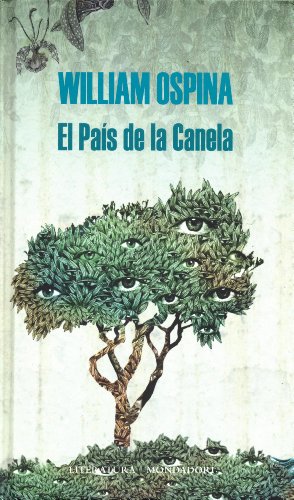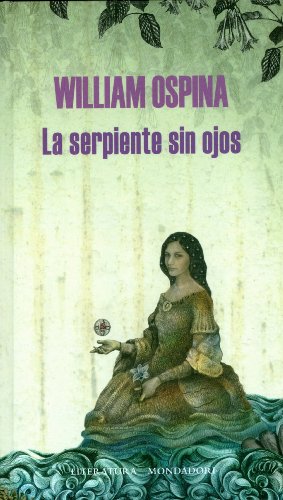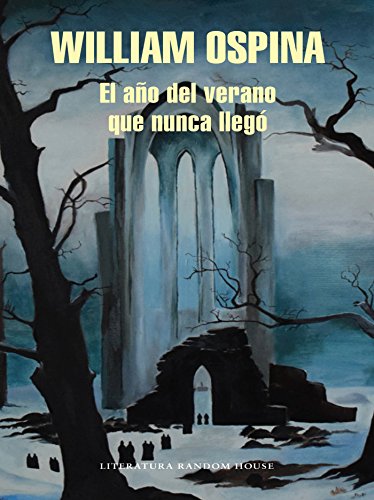The shadow of Gabriel García Márquez it is very long for all Colombian writers. This narrative mixture of Gabo between the realism and lyrical idealism of every soul in search of essences supposes an inheritance of which authors such as William Ospina collect your share.
At times engaged in a wonderful ethnic universe born of the not always friendly encounter between two worlds, (one that was understood to be a conqueror and another that had to adopt the role of conquered), about which he wrote his famous trilogy, Ospina also cultivates a poetry that deep down it shakes all his literary creation.
Because read the novelist Ospina it is plunging into a prose full of images and sensations from a very worked formal effect. An effect that finally reveals to us the beauty of language both in description and in action. A total lyricism that few authors achieve today.
Journalist and publicist as steps prior to his literary outbreak, Ospina is that total communicator who is also involved with the social and political and who addresses a diversity of topics in an essayistic field that goes from the existential to the most social, especially for a world Latino evolved from communion but also from conflict.
William Ospina is one of those necessary writers for his time, capable of addressing intrahistories of yesterday and today made into novels and complemented with current visions, analysis and with that innate tendency towards a poetry that rhymes its world in verses about for the current life.
Top 3 best books by William Ospina
The country of cinnamon
It is said that little can be expected from the second parts. And yet, this continuation of "Ursúa", in the middle of the trilogy that would end with "The Serpent Without Eyes", is the most interesting of the three trips that the trilogy traces.
Even today the Amazon is a challenge for any expeditionary who intends to travel its darkest depths. With a current verb in line with the exuberance of the tropical jungle, we accompany the conqueror Orellana, restless and ambitious and who would finally meet his death in the interior of the extensive Amazon riverbank that today is a natural wonder.
Ospina's intention may be the approach to that mentality of the ambitious conqueror that, given the opening of a new rich and glorious world for the intrepid Spaniards who considered themselves omnipotentiary in front of the new people and the new places.
One of the expedition travelers narrates the adventure made reflection, between the epic and the noisy, on the reasons that liberate the fear of death. The expedition makes its way with a multitude of men and slaves, with provisions for a long journey to the country of Cinnamon.
What finally happens is that anthological fight against a nature that is not willing to give in to those who believe they are possessors of the unknown.
The serpent without eyes
In the closing of this trilogy about those days of conquest of the new world, I can guess an intention of reparation, a complaint and at the same time an exercise in reconciliation thinking about what was better than what was left after a conquest with moments of cruelty, of plunder, with an interesting miscegenation, with love and hate, with blood and passion, with ambitions and absolutely true epic stories in a historical period where Pangea was once again uniting continents thanks to the stubbornness of the sailors who wanted to reconstruct a world separated by telluric movements millennials.
One cannot doubt the will of the Spanish empire to submit to the new peoples found from the Caribbean to South America, it is not a matter of underestimating cruelty at a time when violence was part of everyday life.
But in the end there was something magical about communion. The Spanish, heirs of the Roman conquerors who once occupied the peninsula, learned to impose firmly but trying to unite, nothing to do with the exterminations of North America by the Anglo-Saxon conquerors ...
The year of summer that never came
The most romantic heart in Europe beat many times at Villa Diodati, a Geneva mansion on the shore of the imposing Lake Geneva, nestled among trees and raised on a porch that raised the eyes of the house towards the lake.
In the middle of the romantic movement, some of the most renowned creators of the trend coincided there to ramble on about the soul and those great emotions and fears that illuminated a misty treatment of existence. The book focuses us on the summer of 1816, the house is inhabited by Lord Byron, Mary Shelley or Polidori.
And history would have it that that summer did not exist as such because the 1815 eruptions of the Tambora changed the world as it was known. The apocalypse loomed like a strange omen and the Diodati villa was an exceptional vantage point from which to contemplate a gray sky, flashing with strange lightning.
The restless souls of such illustrious occasional inhabitants compose a spectral vision of the world that led to two of the most transcendent Gothic creations, The Vampire and Frankenstein.
Ospina justifies with his prose bathed in his usual poetry, how that unforeseen darkness could germinate in an imaginary shared by the writers, finally traced in dark stories that are now universal.




1 comment on “The 3 best books by William Ospina”